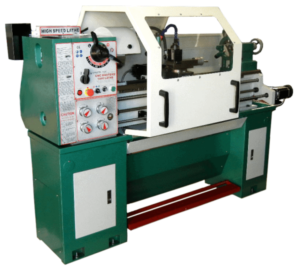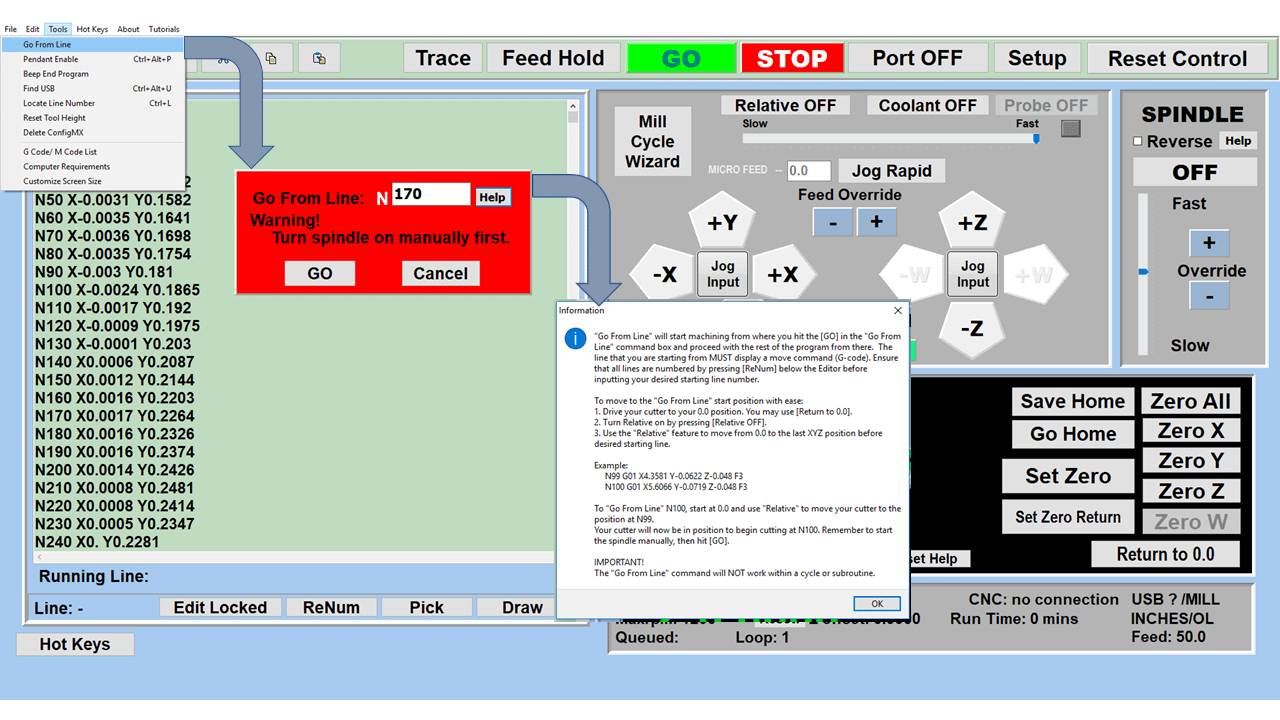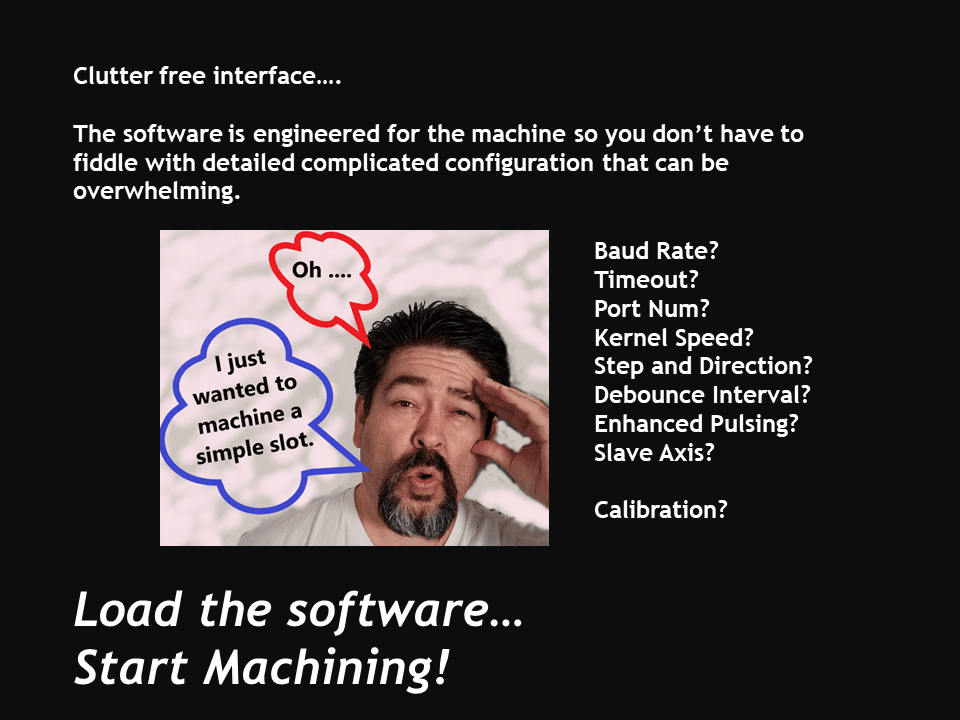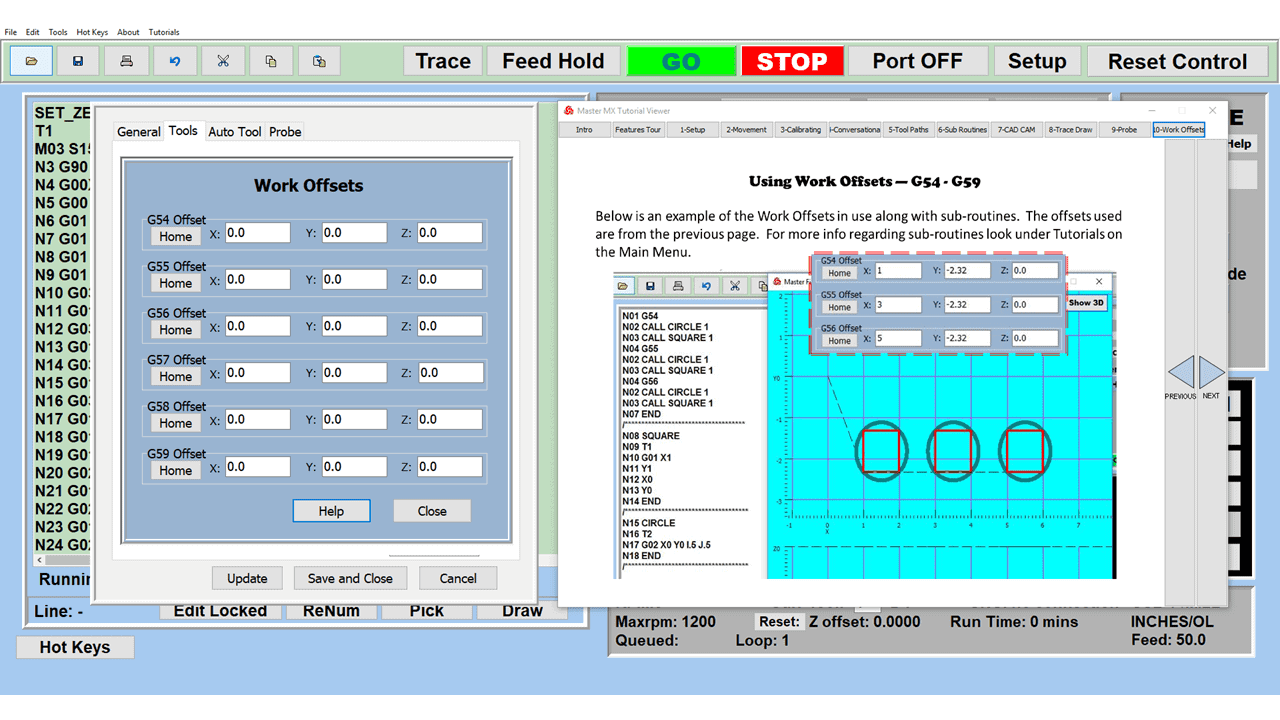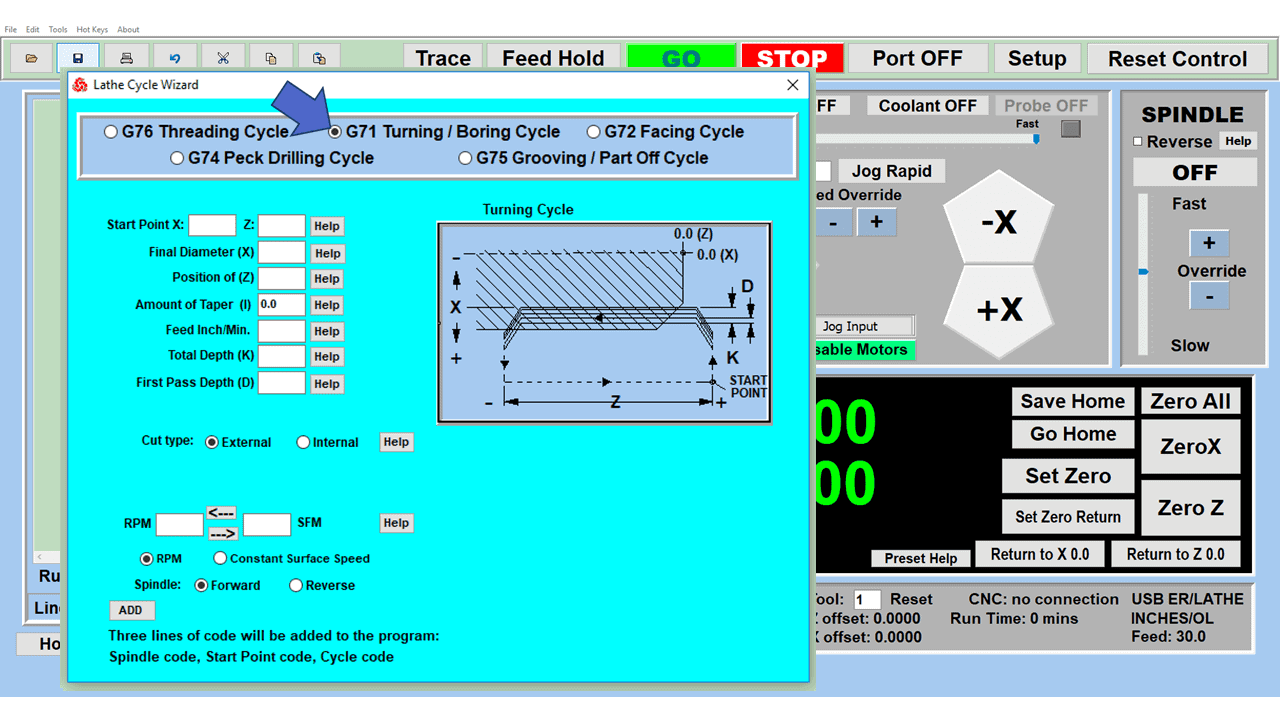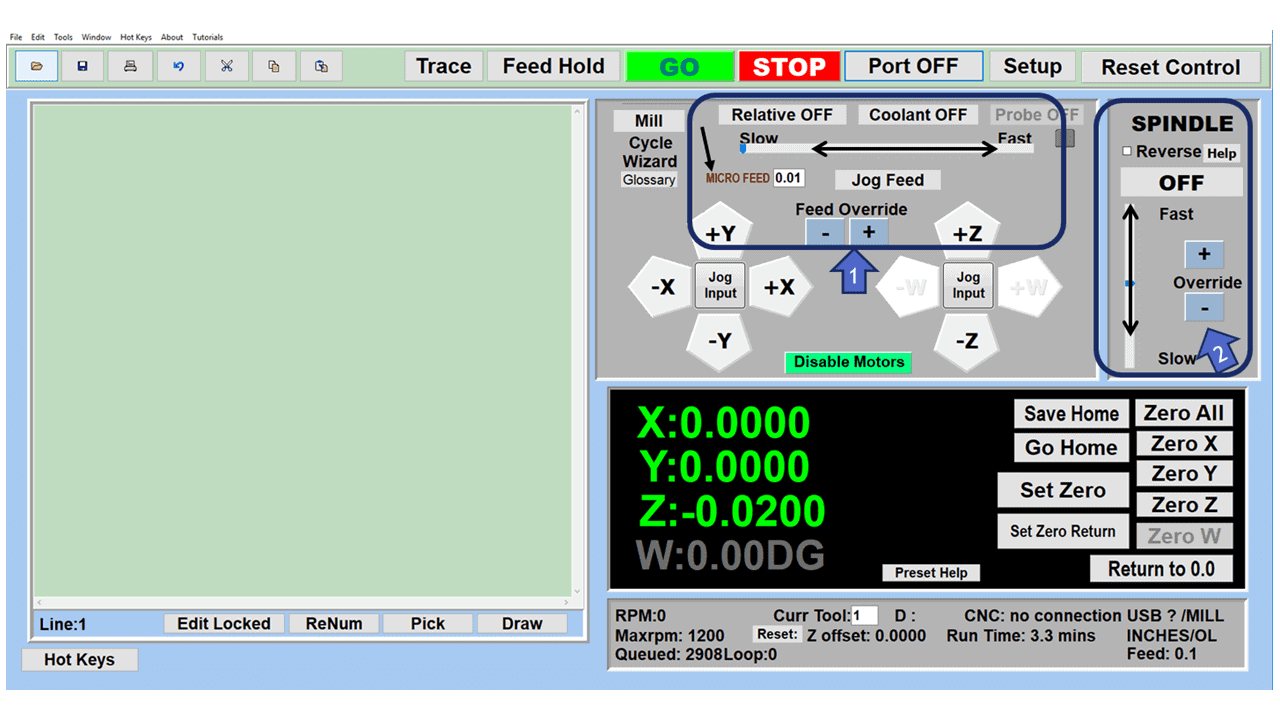A digital readout, or DRO, is a numerical display mounted on manual metal working machines and CNC machine tools that can convert to manual mode, including lathes, milling machines, surface grinders, and planers. Digital readout systems accurately show the position of the cutting tool during machining, eliminating the need for machine operators to make manual calculations subject to human error.
The DRO systems also avoid the possibility of misreading handwheel dials or losing count of the wheel rotations, common issues for machinists using machines without a DRO display to help them. Since operators cannot rely on dial readings for finish dimensions, they frequently stop to check the part with a scale, caliper, micrometer, or dial indicator. Because operators spend less time double-checking and measuring components, they produce higher-quality pieces in less time. And if a machinist must change from metric to imperial readings, it’s a simple flip of a switch on a digital readout DRO.
Although DROs are compatible with several machine types, they are used chiefly on milling machines and lathes. For example, a 3-axis DRO indicates the X and Y-axis positions of the milling machine table and the Z-axis position (up and down) of the cutting tool. At the same time, a typical lathe DRO shows the carriage and cross-slide positions.
How Does a DRO Work?
The digital read-out system comprises a computer, encoders, and a numeric display. The computer reads signals sent from the encoders tracking the machine’s axes. These linear or rotary encoders report the workpiece movements to the display. Because the encoders are an essential part of the DRO system, it’s important to know and understand the different types of encoders since they differentiate one DRO from the other.
Encoders are also called sensors since they are sensing devices for providing feedback, which is the conversion of motion into an electrical signal displayed for the operator to view the positioning and movement of the workpiece.
These encoders, included in all DRO kits, have a scale that remains stationary and one that moves with the workpiece. The encoder then measures the variations in the position of the two scales, sending a signal to the display in one of two ways: incremental or absolute.
With incremental movement, a specific position is not tracked. Instead, it measures the change in movement from one position to the next. On the other hand, the absolute encoder indicates if the workpiece positioning has changed, but also reports the encoder’s absolute position.
There are also two main encoders to consider: linear and rotary.
Linear vs. Rotary Encoders
As the names suggest, linear encoders track linear motion, and rotary encoders track rotating shafts, each designed to find errors in the movements they follow. Unsurprisingly, linear encoders are more frequently used than rotary encoders for lathe and mill work.
Linear encoders
Since a linear encoder connects to a moving part of the machine, it is subject to impact damage, requiring a metal shield to protect it. These encoders minimize motion errors such as backlash, so the linear scales and mounting brackets must be installed carefully to ensure the signal integrity is not compromised.
Rotary encoders
Rotary encoders typically measure spindle rotation on the machine tool, but some issues make the linear encoders preferable.
Rotary encoders indicate the position of the cutting tool by tracking the number of revolutions it requires for the motor to drive the ball screw. However, the rotary encoder does not track friction’s significant effect on the ball screw during high speeds and acceleration. The effect, called thermal expansion, can change the position of the nut traveling with the ball screw and the cutting tool.
As a result, linear encoders have become the favored option in digital readout kits.
Types of Linear and Rotary Encoders
Each encoder comes in various types with the optical and magnetic encoders being the most common.
Optical encoders
Made from a strip of high-quality glass with evenly etched marks, the glass scale has two optical sensors positioned close together to execute photoelectronic scanning when the machine axis moves. The optical scales use either the reflection or diffraction of light to sense positioning.
Glass scales work best for ultra-precision machining because they offer higher resolution than their magnetic counterparts, making them a favorite of the aerospace industry. Because the glass strip is highly sensitive to debris interfering with light transmission, it is enclosed in an aluminum housing, protecting it from coolant and chips.
Magnetic encoders
Magnetic scales use an embedded magnetic strip to track position information by detecting changes in magnetic fields. These encoders are less sensitive to coolant and dust and can be shortened to a desired length. The bulkiness of magnetic encoders makes the mounting process more challenging, but their design is more robust than other styles.
Electronic scales
Instead of glass, a printed circuit on a stainless steel ruler triggers at least two microelectronic sensors. The resolution is limited, but shielding the encoder from coolant and flying chips is unnecessary. Electronic scales are relatively resistant to shop contaminants and debris and are significantly cheaper than their glass counterparts.
Ball scales
The ball scales produced under Newall use an electromagnetic field to track ball bearings in a tube. They sell under the trade names Spherosyn and Microsyn but work only with Newall DROs.
Rack and gear scales
These encoders use a rack (toothed metal strip) that meshes with a gear turning a rotary encoder. These models claim an accuracy of 0.002 inches per foot, though some users report no measurable deviation over several feet of travel. One downside is concern over debris getting between the gear and rack.
Who Makes the Best Digital Readout Systems?
The LCD DRO market segment remains dominated by high-end units from well-known brands, including Acu-Rite, Newall, Heidenhain, Mitutoyo, and Fagor. These brands offer top-of-the-line digital readouts built to last, advanced features, and are a pleasure to operate. Their high-quality mechanical or tactile membrane switches are rated for hundreds of thousands of actuations, guaranteeing a long service life.
One drawback to these high-end models is their price tags. Units with these features are costly, and you can expect to pay around $2000 for a mid-range DRO kit and up to $5000 for a premiere model with an LCD display. Additionally, these manufacturers often use proprietary scale protocols, so the repair or replacement could be expensive if something fails out of warranty.
A Brief History of Digital Readouts
Acu-Rite arrived on the manufacturing scene in 1985, releasing the first cathode-ray tube (CRT) readout, eventually known as vision readouts (VROs). It was typically mounted on 3-axis mills, either knee or bed styles. With unique features like tool offsets, programming, and quick reference tables, the Acu-Rite readout systems were trailblazing devices.
In the 1990s, Acu-Rite released the MILLPWR 2-axis CNC Control / 3-axis Readout System. The new product was an unqualified success in efficiency, cost-effectiveness, and productivity. Then again, in the 2000s, Acu-Rite continued improving its product line, allowing MILLPWR to process G-code files and provide 3D contouring and easy program code translation.
Since the 1980s, Acu-Rite and its competitors have been supplying innovative digital readout systems and encoders to the growing manufacturing sector.
What’s the Next Step After You Decide to Buy a DRO?
DROs present quite a conundrum: On one hand, they are an expensive purchase, while on the other, they will save your company money in the long term. Once you have determined that buying a DRO kit makes sense, you have one more consideration: Which display type will you choose for your DRO? There are two primary display methods, each with their advantages and disadvantages.
Menu system
The menu system display has a smaller, streamlined display with fewer buttons and a smaller keypad. Since menu systems are easier to manufacture, they are less expensive, making them more economical. At first blush, this appears to be the way to go. However, because menu systems have fewer controls, machinists should expect to memorize numerous keystrokes since the display works with a drill-down menu system. Accessing the correct essential function will require significant study or reliance on the menu system guide.
Dedicated button or hard-key system
Instead of a drill-down system, this display offers a dedicated button system, just as the name suggests. Because the display is populated with buttons, it requires more material to manufacture, making it more expensive than the menu system. However, it is a much easier display to use.
As far as installing your DRO kit, you must decide whether you want to tackle the job yourself or hire a professional. Remember that your DRO system is meant to save time and improve accuracy, and it can only do that if it’s installed correctly!

